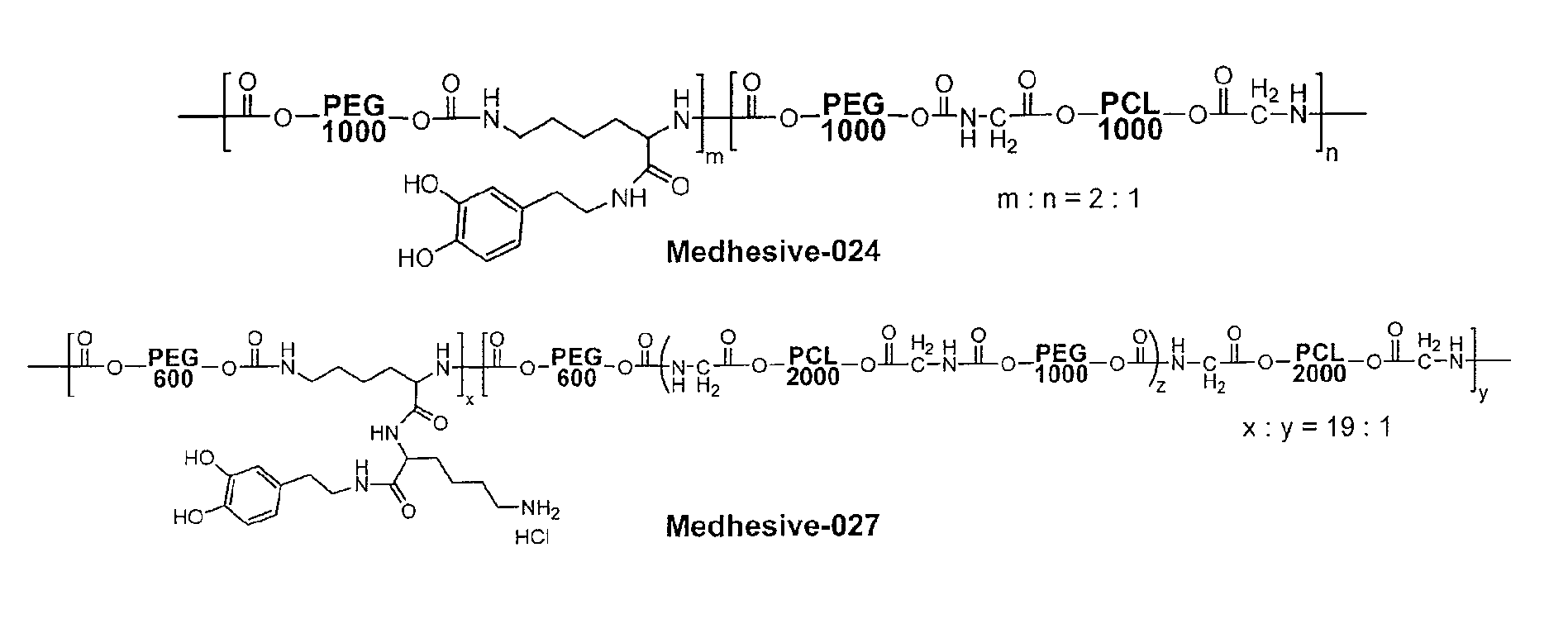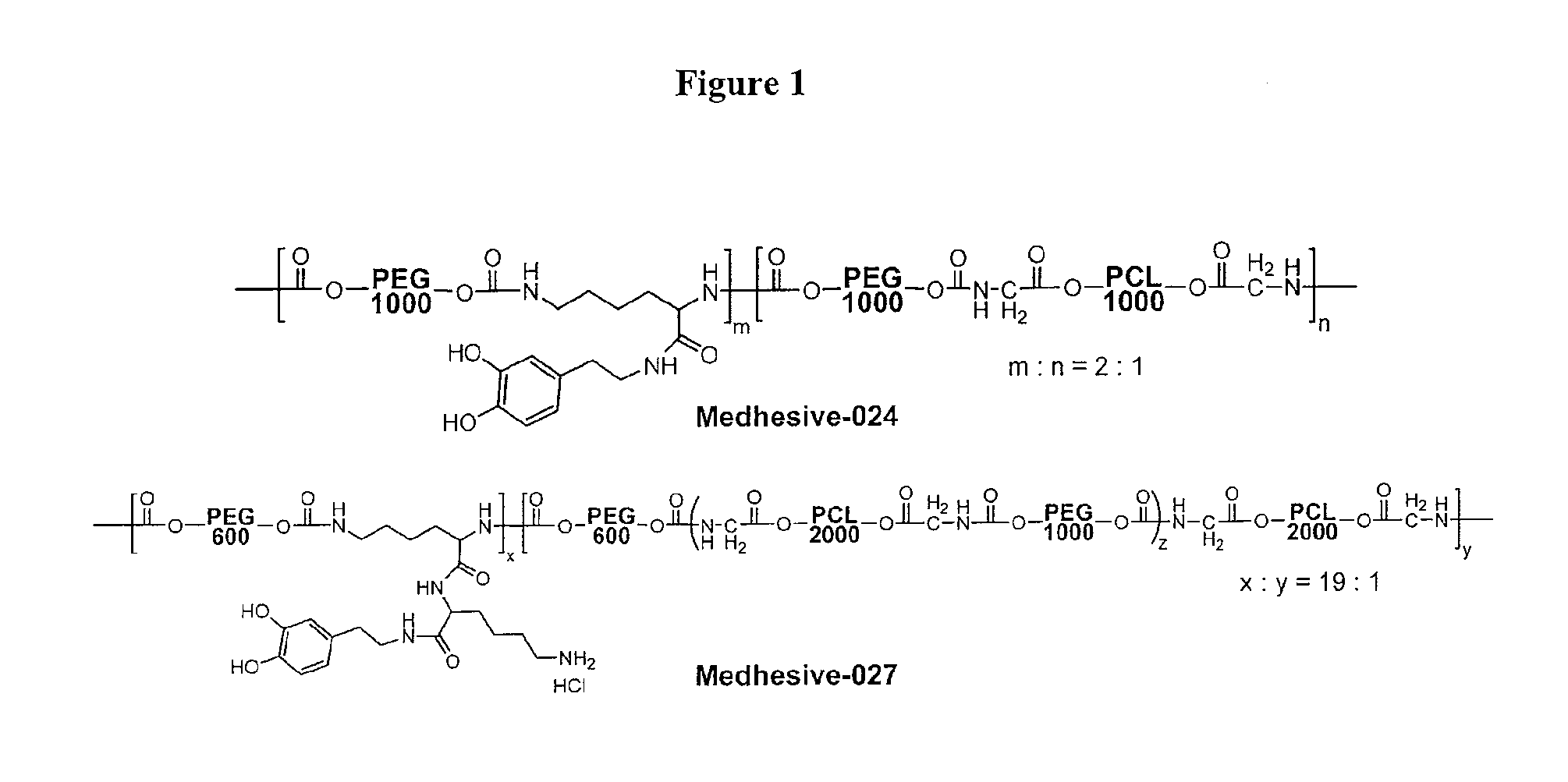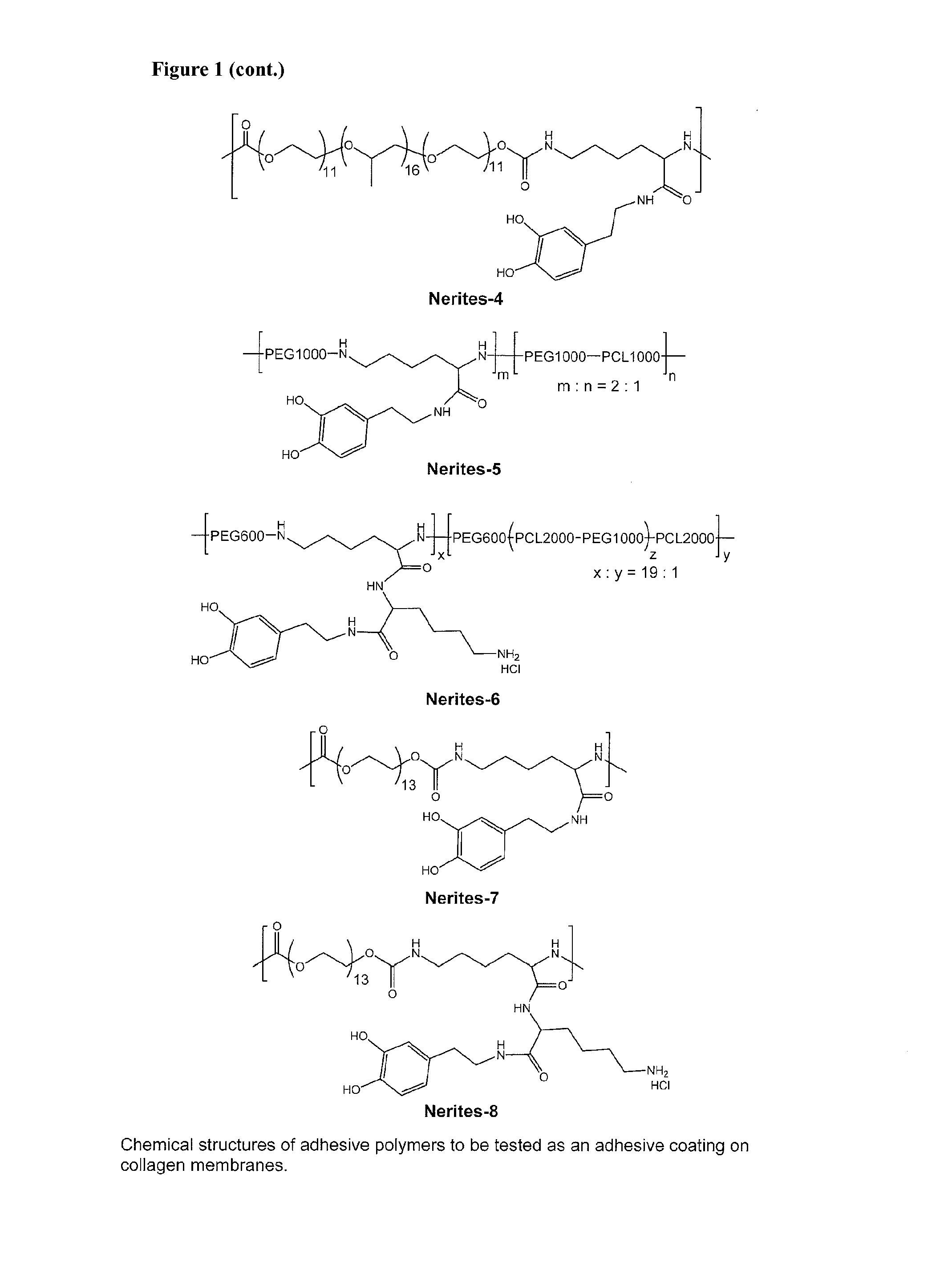Bioadhesive constructs with polymer blends
a bioadhesive and polymer blend technology, applied in the field of substrates, can solve the problems of inability to completely solve the infection, lack of tissue-adhesion characteristics, and no one approach has yet proved completely effective, so as to prevent the possibility of long-term infection and chronic patient discomfort, prevent tissue and nerve damage, and eliminate or reduce the need
- Summary
- Abstract
- Description
- Claims
- Application Information
AI Technical Summary
Benefits of technology
Problems solved by technology
Method used
Image
Examples
example 1
Synthesis of DMA1
[0250]20 g of sodium borate, 8 g of NaHCO3 and 10 g of dopamine HCl (52.8 mmol) were dissolved in 200 mL of H2O and bubbled with Ar. 9.4 mL of methacrylate anhydride (58.1 mmol) in 50 mL of THF was added slowly. The reaction was carried out overnight and the reaction mixture was washed twice with ethyl acetate and the organic layers were discarded. The aqueous layer was reduced to a pH1H and 13C NMR was used to verify the purity of the final product.
example 2
Synthesis of DMA2
[0251]20 g of sodium borate, 8 g of NaHCO3 and 10 g of dopamine HCl (52.8 mmol) were dissolved in 200 mL of H2O and bubbled with Ar. 8.6 mL acryloyl chloride (105 mmol) in 50 mL THF was then added dropwise. The reaction was carried out overnight and the reaction mixture was washed twice with ethyl acetate and the organic layers were discarded. The aqueous layer was reduced to a pH1H and 13C NMR was used to verify the purity of the final product.
example 3
Synthesis of DMA3
[0252]30 g of 4,7,10-trioxa-1,13-tridecanediamine (3EG-diamine, 136 mmol) was added to 50 mL of THF. 6.0 g of di-tert-butyl dicarbonate (27.2 mmol) in 30 mL of THF was added slowly and the mixture was stirred overnight at room temperature. 50 mL of deionized water was added and the solution was extracted with 50 mL of DCM four times. The combined organic layer was washed with saturated NaCl and dried over MgSO4. After filtering MgSO4 and removing DCM through reduced pressure, 8.0 g of Boc-3EG-NH2 was obtained. Without further purification, 8.0 g of Boc-3EG-NH2 (25 mmol) and 14 mL of triethyl amine (Et3N, 100 mmol) were add to 50 mL of DCM and placed in an ice water bath. 16 mL of methacrylic anhydride (100 mmol) in 35 mL of DCM was added slowly and the mixture was stirred overnight at room temperature. After washing with 5% NaHCO3, 1N HCl, and saturated NaCl and drying over MgSO4, the DCM layer was reduced to around 50 mL. 20 mL of 4N HCl in dioxane was added and th...
PUM
| Property | Measurement | Unit |
|---|---|---|
| weight percent | aaaaa | aaaaa |
| weight percent | aaaaa | aaaaa |
| weight percent | aaaaa | aaaaa |
Abstract
Description
Claims
Application Information
 Login to View More
Login to View More - R&D
- Intellectual Property
- Life Sciences
- Materials
- Tech Scout
- Unparalleled Data Quality
- Higher Quality Content
- 60% Fewer Hallucinations
Browse by: Latest US Patents, China's latest patents, Technical Efficacy Thesaurus, Application Domain, Technology Topic, Popular Technical Reports.
© 2025 PatSnap. All rights reserved.Legal|Privacy policy|Modern Slavery Act Transparency Statement|Sitemap|About US| Contact US: help@patsnap.com



